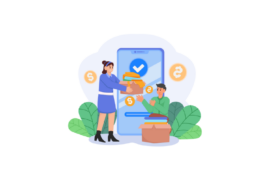In the dynamic landscape of fundraising software for nonprofit organizations, inclusivity stands as a cornerstone, reflecting values of equality, diversity, and social impact. A society and organizations that fully embrace inclusivity foster a more equitable, supportive, and engaged environment for all members of the community to contribute. This is particularly important for Canadian nonprofits dedicated to creating positive change.
Importance of inclusivity to nonprofit success
Nonprofit organizations play a pivotal role in addressing wide-ranging social issues through healthcare, environmental stewardship, and more. However, to be truly effective requires engaging diverse individuals from all backgrounds, abilities, and perspectives in strategic planning and implementation. An inclusive approach not only aligns with ethical representation, but enhances outreach, programs, and ultimately, the scope of impact.
True inclusivity involves cultivating an atmosphere where everyone feels welcomed, respected, and empowered to participate according to their interests and capabilities. By prioritizing inclusion, nonprofits can harness a wealth of skills and ideas from a diversity of talents, strengthening initiatives.
Fundraising technology: a tool for broadening participation
Modern fundraising platforms are transforming how nonprofits connect with and mobilize support. Their potential to break down barriers and expand access to participation makes inclusivity attainable. Whether contributing time or donations, technology provides alternatives for involvement regardless of physical ability or location.
When applied conscientiously, such tools become a means of broadening outreach and ensuring all who care for a cause can engage through online giving, virtual events, and accessible communications. In this way, technology guarantees that geographic boundaries and physical limitations do not preclude meaningful contribution to mission.
The Landscape of Inclusivity in Canadian Nonprofits
In Canadian society, nonprofit organizations significantly impact social change. However, inclusivity within these groups is complex. While many strive for diversity, successes differ considerably.
Some excel at welcoming all, though others struggle with true inclusion. Inclusivity demands an embracing culture, not just acknowledging differences. Certain nonprofits effectively institute policies ensuring accessibility to people of all backgrounds in programs and opportunities. Yet barriers remain in some, hindering full involvement of some groups.
One faced by disabled individuals is limited fundraising participation. Physical spaces may lack features allowing mobility, and materials risk excluding visual or hearing impairments. Moreover, traditional in-person focused models can inadvertently isolate those health or geography hinders from attending. Acknowledging such challenges is key for nonprofits’ fundraising to genuinely represent Canadian society’s diversity.
Technology remarkably aids removing inclusion barriers. As the digital world expands, it inventively solves persisting issues. Fundraising software especially facilitates addressing concerns through alternative engagement channels accessible to more. This allows nonprofits to host virtual events breaking geographic limitations and enabling participation from those challenges may prevent attending in-person. Online donation platforms also conveniently and inclusively let supporters contribute to supported causes regardless of location.
Understanding Accessible Fundraising Software
Accessible fundraising platforms promote participation for people of all abilities. Contrary to conventional fundraiser setups, these cutting-edge solutions consider diverse requirements through custom features.
Features include responsive interfaces accounting for varying technological skills and capacities. Multisensory elements like descriptive text, captions, and screen-reader integration help people with visual issues. Assistive technology like voice controls or alternate inputs seamlessly support users with disabilities. Personalization allows font, contrast, and navigation tweaks for individual needs. Clear, straightforward language makes content comprehensible for cognitive or linguistic challenges.
Adopting accessible software not only stems from compassion but often reflects lawful duties. Accessibility appears in Canadian statutes like Ontario’s AODA and the national human rights law. These safeguard accessibility as a protected human right.
By selecting accessible fundraiser software, nonprofits satisfy legal standards and foster a fairer society where everyone can engage freely. This commitment to inclusion through technology respects people’s rights to participate fully in community life and economy.

Overcoming Implementation Challenges
While the advantages of accessible fundraising software provide much opportunity, embracing such advances is challenged by several barriers. It is imperative to pinpoint and comprehend these hurdles to expertly manage the shift towards a more inclusive fundraising landscape.
Common roadblocks involve:
Tight Budgets: Nonprofits often run on constrained budgets, and the perceived expense of executing accessible fundraising software can discourage adoption.
Unfamiliarity: Some groups may not fully grasp the gains of accessible solutions or underestimate the effect on inclusiveness.
Resistance to Modification: Personnel and stakeholders can reject fresh technologies due to anxieties about a learning curve or potential disturbances to current processes.
Restricted Technological Expertise: Nonprofits with limited know-how may find the prospect of applying new software forbidding.
Obscurity Regarding Accessibility Criteria: Organizations may lack lucidity on the exact accessibility standards and rules they must adhere to.
Strategies for Addressing and Surmounting These Hurdles
Tackling these barriers necessitates a strategic and comprehensive approach. Here are methods to overcome common obstacles:
Financial Planning and Fundraising: Develop a clear budget incorporating the costs of enacting accessible fundraising software. Explore fundraising options or grants specifically targeting technology improvements.
Education and Coaching: Conduct training sessions to educate staff and stakeholders about the advantages of accessible solutions. Address worries and showcase success narratives to build confidence.
Pilot Initiatives: Implement accessible fundraising software on a smaller scale at first, using pilot programs to demonstrate effectiveness and gather feedback for enhancements.
Collaboration and Partnerships: Seek partnerships with groups that have successfully executed accessible remedies. Collaborate to share resources, knowledge, and exemplary practices.
Consultation with Accessibility Experts: Engage with experts in accessibility to evaluate the organization’s particular needs and recognize suitable software remedies that align with legal requirements.
Guidance for Nonprofits Contemplating the Transition to Accessible Remedies
For nonprofits considering the shift to accessible fundraising software, a strategic and informed approach is crucial. Consider the following direction:
Conduct a Needs Evaluation: Identify the specific accessibility requirements of your organization and its supporters. This will guide the selection of software that best fits those needs.
Research and Compare Options: Explore various accessible fundraising software alternatives, considering elements such as features, simplicity of use, and compatibility with existing systems.
Engage Stakeholders: Involve key stakeholders, like personnel, donors, and people with disabilities, in the decision-making process. Their input will provide valuable viewpoints.
Create a Transition Plan: Develop a clear and progressive plan for adopting accessible fundraising software. Include training sessions, pilot programs, and feedback loops to ensure a smooth transition.
Monitor and Assess: Regularly gauge the impact of the implemented software on inclusiveness. Gather feedback from users and make necessary adjustments to continually boost accessibility.
The User Perspective: Voices from the Community
At the heart of any discussion on inclusivity in fundraising software lies the invaluable insight gained from the firsthand experiences of individuals with disabilities. By centering diverse user perspectives, a deeper understanding of challenges faced and the impact of accessibility on engagement can be understood. Crucial too is comprehending which features truly empower users.
Valuable Insights into Empowering Features
Descriptive alt text enables comprehension for those with visual impairments, appreciating accurate image descriptions. Adaptive design and intuitive navigation streamline engagement, allowing seamless participation in fundraising activities regardless of ability. Compatibility with assistive technologies such as screen readers is paramount, integrating effortlessly with chosen tools. Customization options like font size and color adjustments empower personalization to suit every individual.
Constructive Recommendations Based on Diverse Feedback
Users insightful feedback also highlights areas for continued progress: Increased awareness among nonprofits of accessibility’s importance, bridging understanding through educational initiatives. Involving individuals with disabilities in design and testing ensures products genuinely meet diverse needs. Committing to ongoing improvements addressed emerging challenges contributes to platforms’ longevity and effectiveness at empowering all.
Advancing Inclusivity Beyond Software
In exploring equitable fundraising software, it’s clear inclusivity demands more than technology alone. A holistic, permeability approach permeates all nonprofit functions – from visioning to engagement and internal norms.
Weaving Access Into Strategic Planning
For diversity-driven nonprofits, embedding access into strategy is pivotal. This involves strategic planning incorporating goals and allocated resources towards inclusion. Policy expressly addresses inclusivity in events, communication and programs. Leadership authentically represents community diversity, including staff and governance with disabilities. Continual self-assessments collect stakeholder feedback and hunt improvement opportunities.
Collaborating for Deeper Understanding
Collaborations with advocates and communities magnify commitment. Partnerships gain insight from disability leaders, cultivating inclusive initiatives. Engagement elicits community perspectives in decision-making, ensuring efforts address real needs. Events thoughtfully consider experts’ and members’ guidance on venues, activities and communication. Awareness campaigns educate wider networks on efforts and inclusion’s importance.
Educating for Cultural Shift
Education underpins an inclusive culture. Comprehensive training empowers all team members to contribute. Stakeholders learn of commitments to build trust and support. Inclusive communication deploys accessible materials and clear language. Continuous learning adopts advancing practices, technologies and standards to refine efforts.

Future Trends and Innovations
As technological advances continue apace, opportunities broaden to nurture inclusion through fundraising efforts.
Emerging Technologies Promote Accessibility in Fundraising Platforms
Artificial intelligence holds enormous potential to customize donor experiences. By analyzing patterns, predictive algorithms allow tailoring approaches according to preferences and requirements.
Blockchain ensures fiscal transparency. Smart contracts securely track donations on distributed ledgers, furnishing donors real-time visibility into allocation.
Immersive media like virtual and augmented reality can reinvent how causes are conveyed. For visual impairments, VR supplies auditory or tactile feedback to craft multi-sensory experiences.
Voice control ascent ushers novel interactions. Integrating voice functions simplifies software navigation for mobility or vision impediments.
Projections for Canada’s Future of Inclusive Fundraising Technologies
Personalization will likely predominate as analytics and AI craft individualized content and interactions, guaranteeing accommodation and relevance.
Blockchain adoption will spread as accountability concerns intensify, demonstrating commitment through verifiable transactions.
VR and AR will infiltrate campaigns, offering distinct emotive portrayals to engage diversity.
Standards will evolve alongside software to ensure continuing inclusion and standard-compliance.
How Nonprofits Can Remain Progressive
Continuous adaptation demands regular instruction and landscape surveillance.
Collaborating with innovators, experts and peers furnishes cutting-edge solutions and shared assets.
Technology investments through fundraising or grants embrace accessibility advances.
User involvement shapes designs sympathetic to diverse requirements.
Conclusion
In the hands of Canadian nonprofits, accessible fundraising software has the potential to be so much more than merely a tool – it can spark meaningful change by aligning technology seamlessly with compassionate values of inclusion.
Transforming Nonprofits with Thoughtful Fundraising
Exploring the nuanced landscape of accessible fundraising platforms highlights Werbylo’s prominent role in cultivating a more considerate future. By offering their service freely to charities, Werbylo leads the effort toward accessibility and understanding.
Progress requires attention in several areas:
Continually reexamine features through an empathetic lens, ensuring adaptive design and compatibility while empowering customization.
Engage earnestly with diverse organizations and individuals. Gather insightful feedback through diverse methods to inform sensitive improvements addressing all.
Launch educational initiatives to illuminate the significance of inclusion for fundraisers. Equip nonprofits creatively through various resources on leveraging Werbylo for engaging, accessible campaigns.
Forge integral ties with accessibility authorities and specialists in thoughtful planning. Surpass standards through cooperation, exemplifying sector leadership.
Illustrate impactful stories of inclusion through Werbylo’s application. Inspire others to harness the platform for good by spotlighting real victories.
Beyond the software, promote accessibility proactively within the broader nonprofit world. Contribute to collective progress through sharing, participating in discussions and initiatives.
By diligently pursuing these priorities, Werbylo can cement its role as a catalyst for transformative, inclusive experiences. Continuing to evolve with care and foresight prepares the platform to anticipate and exceed an engaged community’s shifting needs. Sign up now.





